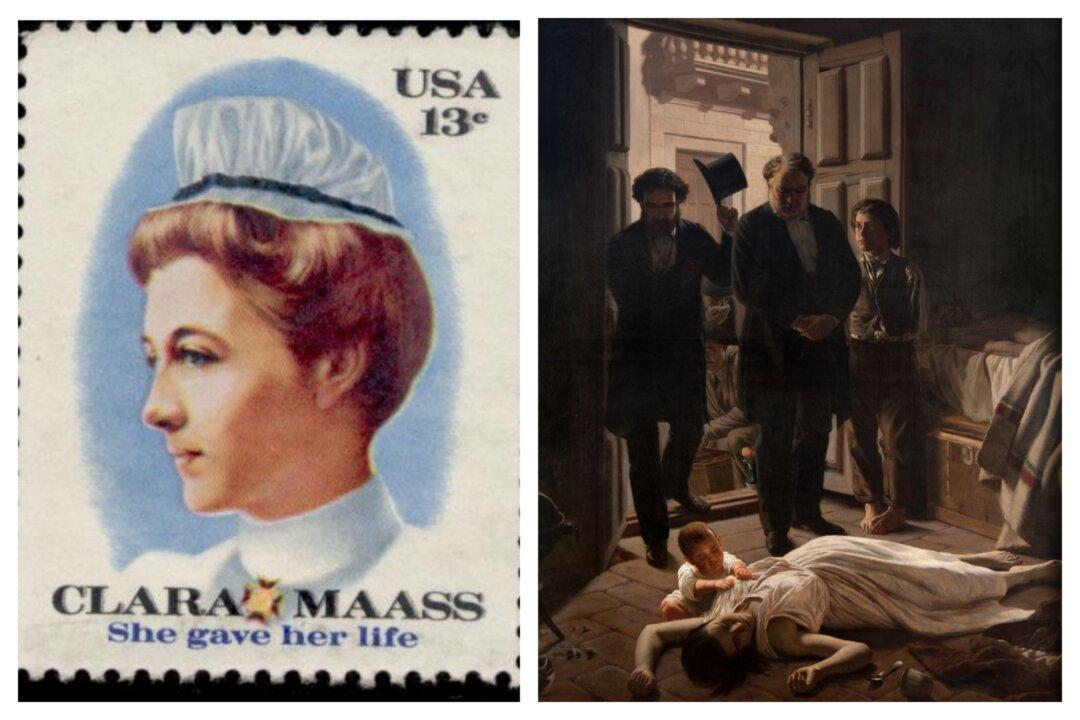In 1845, British naval officer Sir John Franklin left with a crew and two ships to find the Northwest Passage between the Pacific and Atlantic Oceans only to be lost at sea and never seen again. Between 1847 and 1880, around 30 search expeditions were launched to find clues as to what happened to Franklin and his crew. Although the ships wouldn’t be found until over a century later, the search expeditions made some discoveries within the Arctic Region.

Franklin departed on his mission to find the Northwest Passage from Greenhithe, England on May 19, 1845 in the HMS Terror and the HMS Erebus with a crew of 134 men, a monkey (who supposedly liked to steal), a dog, a cat and several live cattle. From there, the ships sailed to Stromness in northern Scotland and then to the west coast of Greenland. While in Greenland, five men were sent home due to illness while the other crew members wrote their last letters home before never being heard from by Europeans again.
The ships headed further northwest on their mission before tragedy struck. Even though their ships were well equipped to handle the icy Arctic waters, trouble seemed to have found Franklin and his reduced crew of 129 men.
After not hearing anything from Franklin or his crew for a couple of years, Franklin’s wife, Jane, became worried. She urged the British government to send out search parties, but the Admiralty insisted that the two ships were equipped with enough food to last three years.

Then, in 1848, the British Admiralty ordered three different expeditions to search for Franklin, The government offered a healthy reward for anyone who could find and help Franklin and his crew.
After several unsuccessful searches, two British navy men Capt. Horatio Austin and Capt. Erasmus Ommanney, and a Scottish shaler named William Penny eventually found the first clue in 1850. The search teams found remnants of a winter camp and three graves of crew members.
More clues surfaced in 1854, when John Rae encountered a group of Inuit. The people told Rae that they had come across a small group of surviving foreigners who had ended up starving to death trying to endure the brutal Arctic winter of 1850.
Upon hearing the news upon Rae’s return to England, the British Admiralty declared all of the crew members deceased. However, Jane Franklin was not satisfied with Rae’s report. She urged explorers to continue searching for her lost husband and even financed some of the expeditions herself.

Then, in 1859, Francis Leopold McClintock’s expedition found an abandoned boat, a skeleton, and two messages written by a crew member that further described the fate of Franklin’s crew. According to the notes, the ships got stuck in ice in 1845, and the crew then wintered on Beechey Island until the summer of 1846. The notes explained that Franklin died on June 11, 1847. When the ships were caught in ice again, the rest of the crew was then forced to abandon the two ships on April 22, 1848. The rest of the crew then perished over the next year or so trying to survive the frigid winter.
For over three decades after Franklin and his crew disappeared, the various expeditions sent to find them resulted in detailed maps of areas of northern Canada and discoveries of several islands and waterways in the previously uncharted Arctic region. In fact, much more information was gained in the efforts to find Franklin rather than from Franklin’s expedition if it had been successful.
The Final Revelations
The mystery surrounding Franklin and his crew led to several more searches and the exhumation of the discovered crew members’ graves. Inspections of crew members’ bodies concluded that most of the crew met their demise due to ailments including starvation, hypothermia, scurvy, and lead poisoning.Then, in 2014, the wreckage of the Erebus was finally discovered on the sea floor of Wilmot and Crampton Bay in Canada’s Kitikmeot Region by Parks Canada in collaboration with local Inuits. In 2016, the wreck of the Terror was found at the bottom of Terror Bay in the same Canadian region by researchers with the Arctic Research Foundation. The discoveries of the two shipwrecks further confirmed what researchers had concluded from previously found evidence and the accounts of the Inuit.








